Red River Hog – The Red River Hog is a wild pig species found in Africa. It is rarely seen far from tropical forests and usually prefers areas near rivers or swamps.
The Red River Hog is an intelligent animal and a wild member of the pig family, found in West and Central Africa. With its striking red coat, it is the most colorful member of the pig family. Its body is covered by a thin white mane that runs along its back.
Red River Hogs weigh between 50 to 100 kg; they may be one of the smaller pig species but are very aggressive. Males defend themselves against rivals by head-butting, using their snouts, and flicking their tails at each other, all while being ready to protect their families from leopards, spotted hyenas, and pythons.
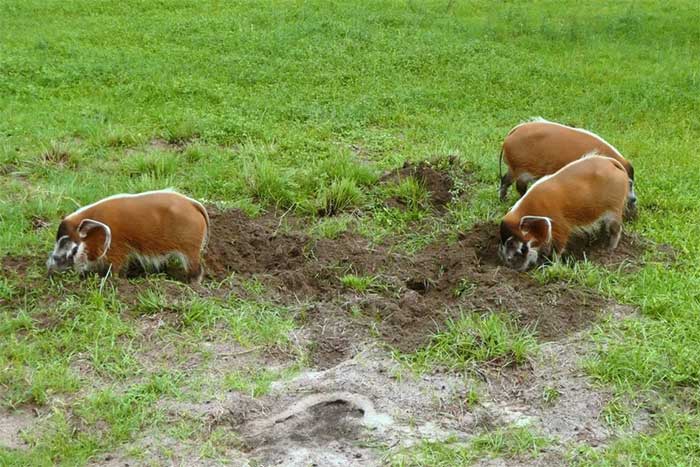 Red River Hogs have striking orange to reddish-brown fur, black legs, and a white stripe along their backs. Adults will have white markings around their eyes, on their cheeks, and jaws; the rest of the snout and face is a contrasting black. The fur on their jaws and flanks is longer than the fur on their bodies, with males having particularly prominent whiskers on their faces. The entire body of the Red River Hog is covered in fur, leaving no bare skin exposed. Males are slightly larger than females and possess conical tusks protruding from either side of their snouts. These bony protrusions on their faces can protect the males when fighting head-on with other males.
Red River Hogs have striking orange to reddish-brown fur, black legs, and a white stripe along their backs. Adults will have white markings around their eyes, on their cheeks, and jaws; the rest of the snout and face is a contrasting black. The fur on their jaws and flanks is longer than the fur on their bodies, with males having particularly prominent whiskers on their faces. The entire body of the Red River Hog is covered in fur, leaving no bare skin exposed. Males are slightly larger than females and possess conical tusks protruding from either side of their snouts. These bony protrusions on their faces can protect the males when fighting head-on with other males.
They use their teeth to dig for roots, tubers, and insects and can also swim and forage for aquatic plants. Additionally, they enjoy eating Boko seeds (Balanites wilsoniana), which they find in elephant dung.
This species is currently not at risk of extinction, but as they continue to encroach on agricultural land and with increasing bushmeat trade, there are concerns that local populations of Red River Hogs may decline.
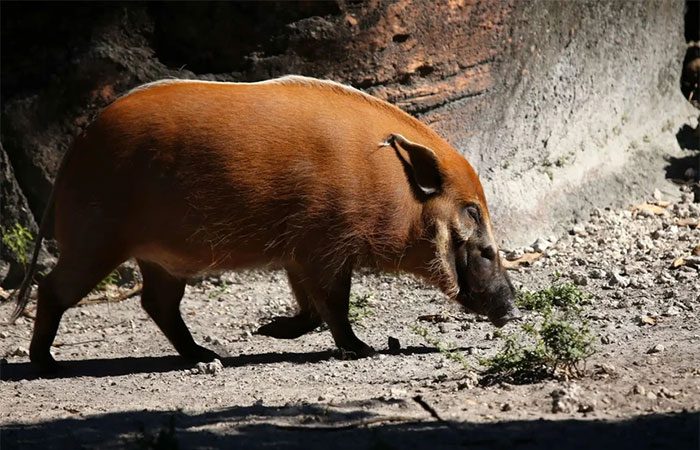
Red River Hogs are found in West and Central Africa. They are distributed from the Congo and Gambia regions to Eastern Congo, south to the Kasai and Congo Rivers. Red River Hogs inhabit tropical forests, dense wet savannas, forested valleys, and areas near rivers, lakes, and swamps.
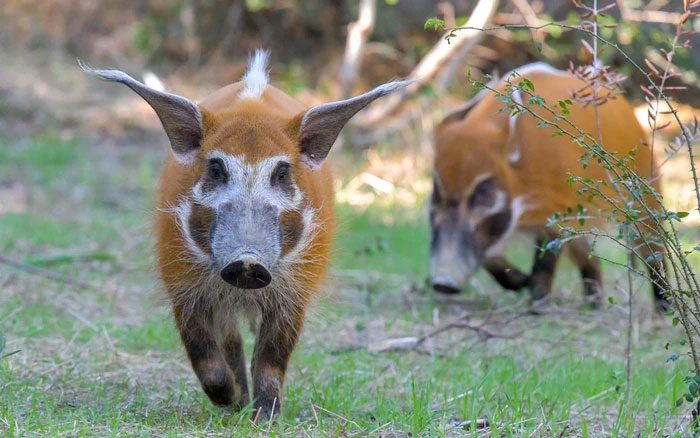
The Red River Hog is the most colorful species in the pig family, named for its reddish fur and tendency to frequently immerse itself in rivers and streams. The colors and markings of this animal can vary slightly; those found in West Africa are primarily red with white stripes along their backs, while those found in Eastern and Southern habitats may be red, brown, or black, sometimes darkening with age.

Red River Hogs are primarily nocturnal and spend most of their time foraging. They use their large snouts to root around in the ground for food and also dig with their tusks and front feet. They often follow chimpanzees to scavenge fallen fruits. These animals live in small groups of 6 to 10 individuals, including one adult male and several adult females along with their young. However, larger groups of over 30 individuals can also occur, especially in favorable habitats.
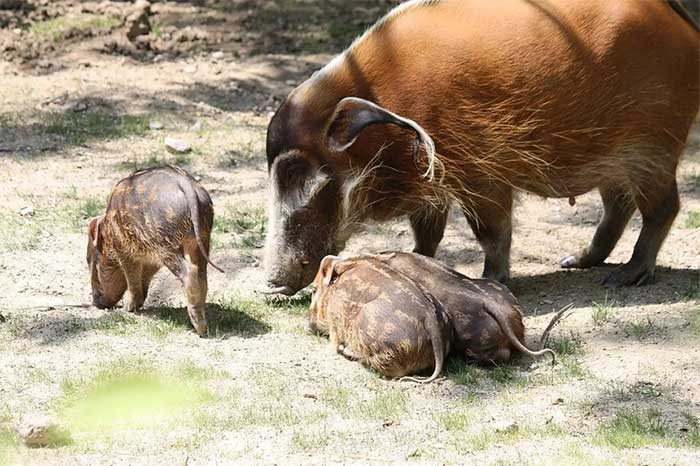
Red River Hogs are highly territorial and males actively protect their “harem” from other males. A favorite activity for these animals is to wallow in muddy ponds and streams. They are also good swimmers and can run quickly. Red River Hogs communicate almost continuously with grunts and squeals, which may signal alarm, distress, or passive contact.
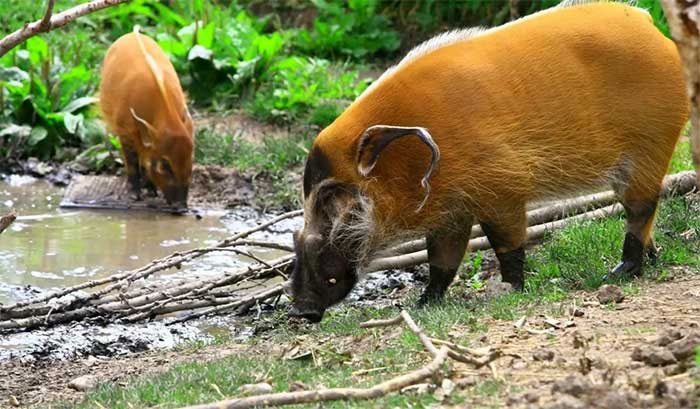
Red River Hogs are omnivorous, primarily feeding on roots and tubers. They also supplement their diet with fruits, grasses, herbs, eggs, carrion, dead plants, insects, and lizards. This species breeds from September to April, peaking during the rainy season from November to February. Females have a gestation period of about 120 days. Mother pigs typically nest with dry leaves and grass before giving birth to a litter of up to 6 piglets, with 3 to 4 being the most common. Newly born piglets usually weigh between 650 to 900 grams and are initially dark brown with yellow stripes and spots. They are weaned after about 4 months and develop their mature light red fur by around 6 months; dark markings on their faces do not appear until they mature at about 2 years old.

The greatest threat to Red River Hogs is hunting as this species is one of the main game animals harvested for commercial purposes in the bushmeat trade across much of Central Africa. In some countries, Red River Hogs cause damage to agricultural crops, and for this reason, they are hunted by farmers. Another threat to this animal is habitat loss, which also leads to overhunting.


















































